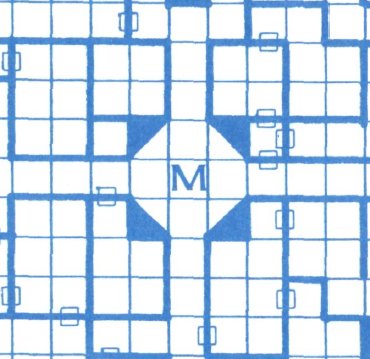
Railroading has gotten such a bad rap in RPG circles that we forget it is one end on a continuum. The opposite end is aimless drifting, with a DM who sits back and throws no hooks, injects little or no action. I’ve played in these games. They are THE WORST.
Too much choice is an empty wasteland. No choice is just the DM talking while the players listen. My experience is that most DMs tend toward railroading when they start, then back away when/if they gain exposure to other styles.
However, a lot of the anti-railroading advice is pretty bad, IMO. You can either way over-prep and over every possibility, or just have stuff happen regardless of which choice the PCs make. They’ll never know you pulled that trick unless they read your notes, right?
That’s lame advice, because it’s just secret railroading. My take on solving for this follows: Learn to become as active a player in the game as everyone else. As DM you are a player. You are playing everyone the players aren’t. You have infinite characters.
This is why DMing is better than playing. I mean, infinity versus one is an easy choice, right?
The challenge I see is that DMs are too static in their thinking. We say prep and imagine maps, and scripted encounters, and neat index cards filled with all the stats we need. This is not how games work. Games are interactive. Static positioning is a relic of the 20th century.
Prep for a session by learning to think like your NPCs. Play them like the players play their characters. That means DOING STUFF, it means giving your NPCs very personal, vengeful, hateful motivations to completely fuck up the characters.
It means getting the players to buy into concrete goals for their PCs, like founding a new kingdom or finding a lost artifact, and then throwing NPCs into the mix who want to stop or foil that.
Most campaigns do the opposite. The NPC has a plan, the PCs need to stop it. That’s sensible, but it fundamentally takes agency away from the characters. It’s also super common because it’s probably the most viable model for published campaigns.
Published campaigns have a hard time being about your characters because we, as publishers, have no idea who they are. So we are stuck talking about the bad guys. You don’t have that drawback, so if you have the bandwidth to homebrew lean into that.
Start your campaign by forcing the players to tell you how the characters want to change the world. That’s your campaign. Now, put people in their way. Those are the NPCs you are playing. Your campaign is ready to roll.
• • •
Missing some Tweet in this thread? You can try to
force a refresh




